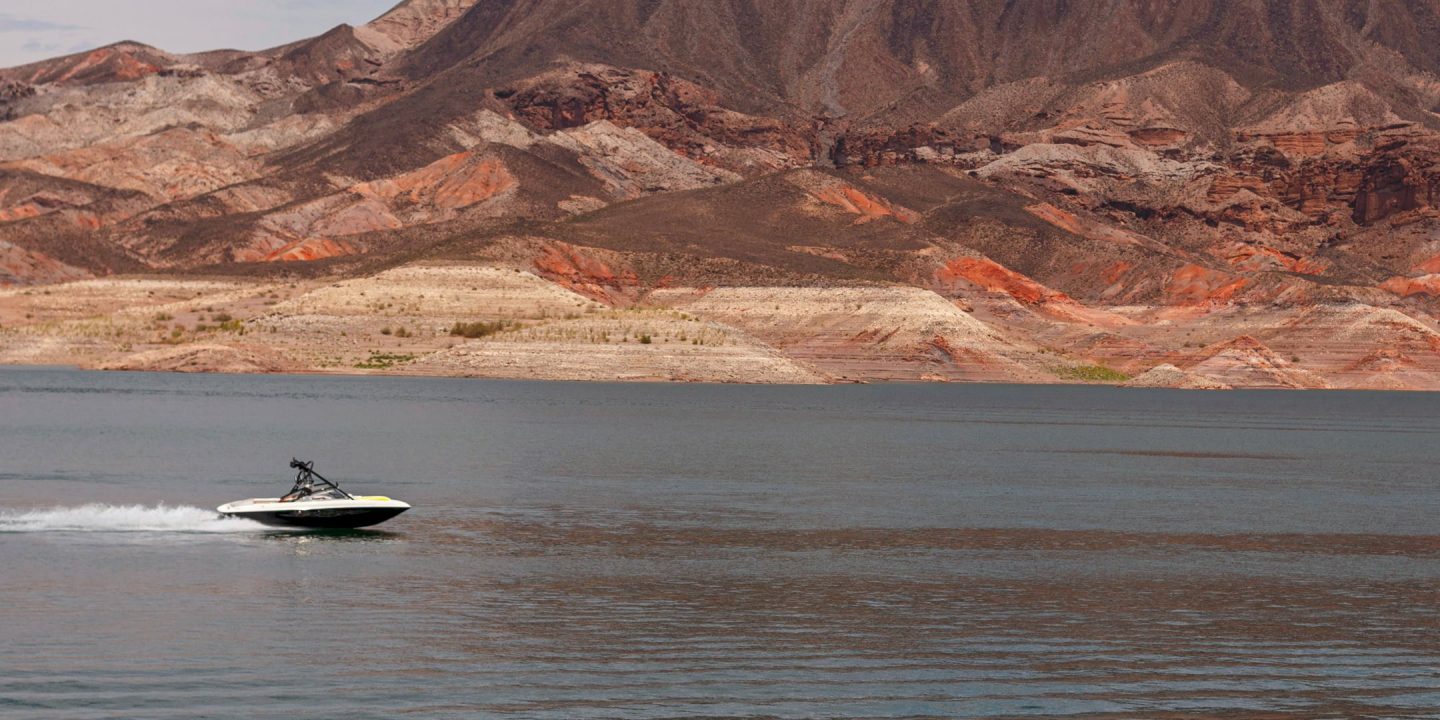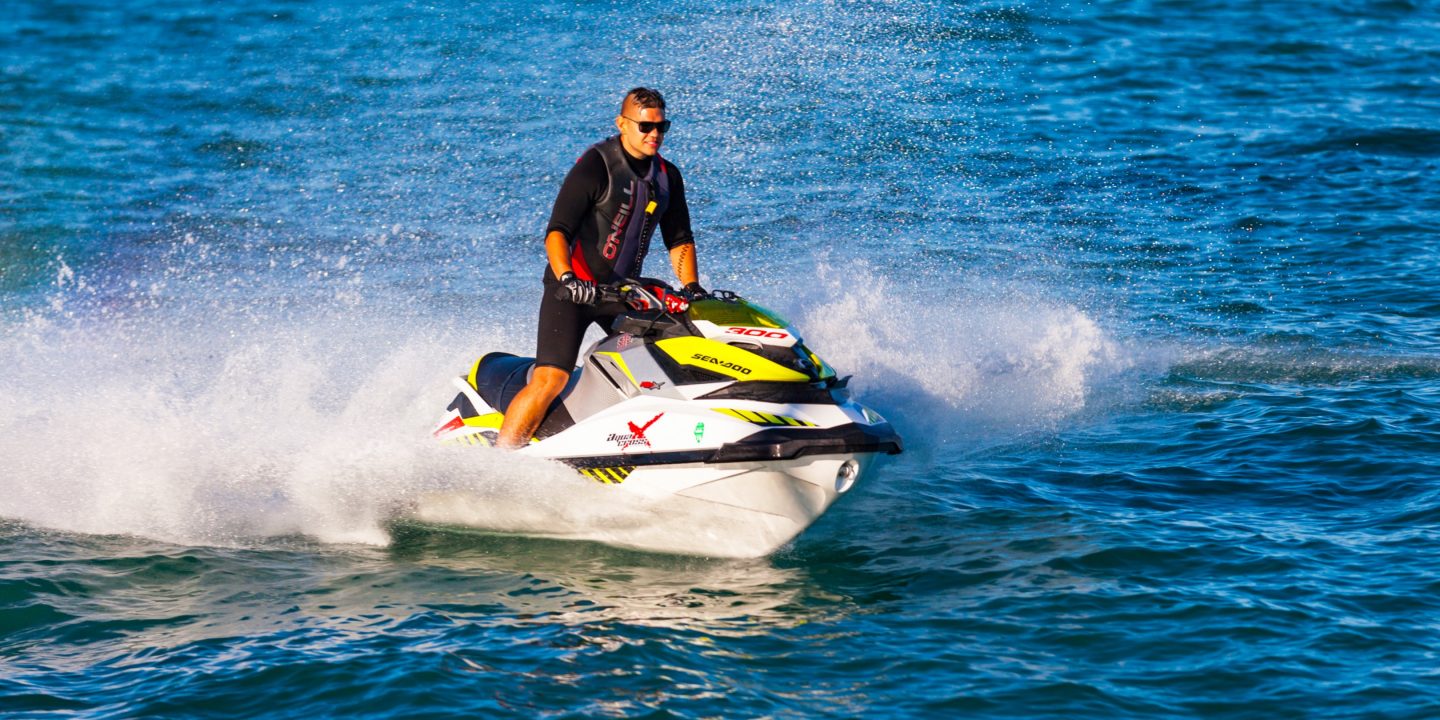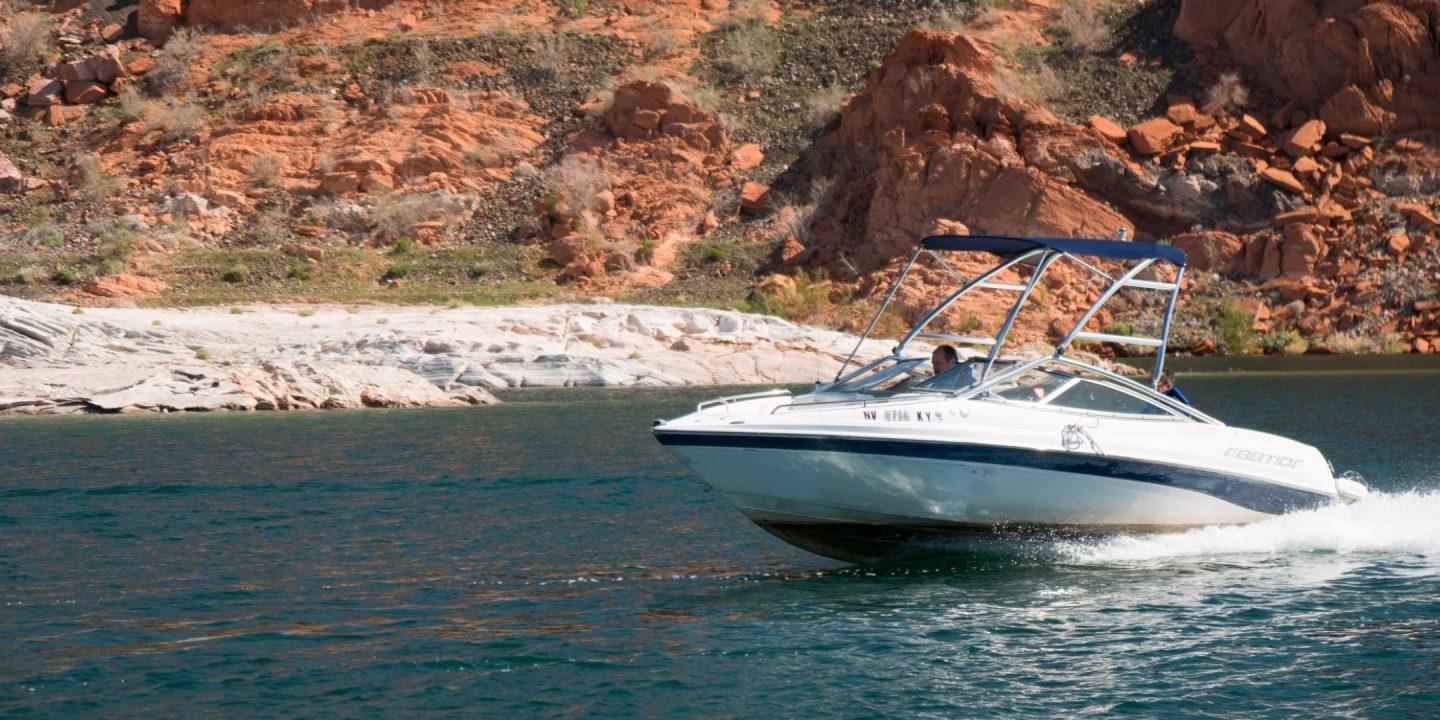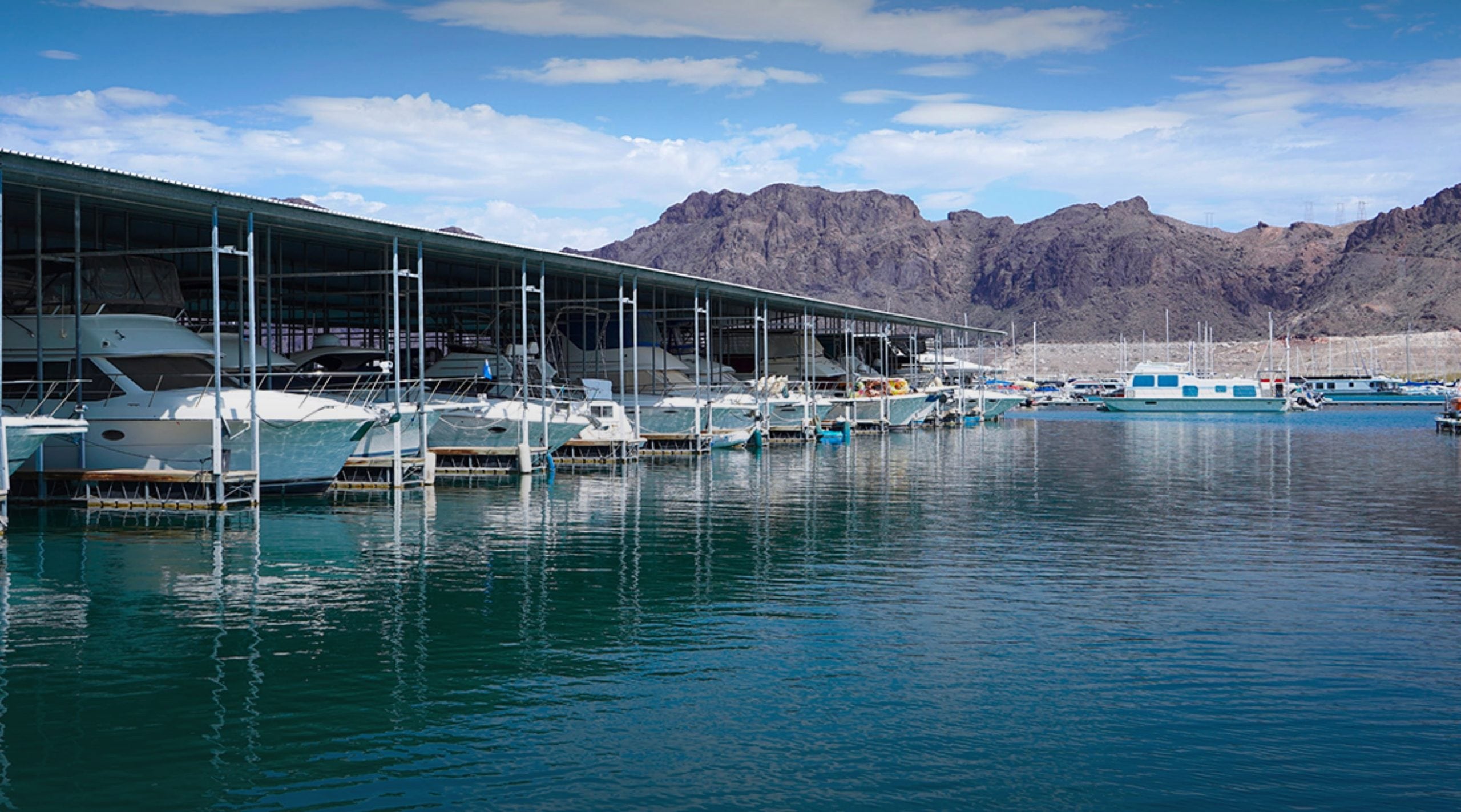AIS PREVENTION
Aquatic Invasive Species

Aquatic Invasive Species are unwanted alien species that are likely to cause economic or environmental harm when introduced to our waterways. The goal of NDOW’s Aquatic Invasive Species (AIS) Prevention program is to prevent the spread of AIS threatening Nevada’s waterways and to prevent new introductions of AIS. The program includes the development and approval of AIS regulations, seasonal inspection and decontamination stations, monitoring, coordination with partners, and AIS prevention education and outreach for the public. The program is funded through collection of an AIS watercraft decal and federal assistance grants.
AIS DECAL PROGRAM

The AIS decal requirement was established to prevent the spread of harmful aquatic species threatening Nevada’s waterways. The decal supports AIS monitoring and research, provides AIS prevention through outreach and education, and provides seasonal watercraft inspections and decontamination stations. The AIS decal also supports enforcement of AIS prevention laws. Many aquatic invasive species, including quagga and zebra mussels, have been transferred from one body of water to another through contaminated watercraft transporting standing water. Remember to always clean, drain and dry.
All watercraft using Nevada waters are required to display an Aquatic Invasive Species decal. Costs for the decal are $13 for motorized watercraft and $6 for non-motorized watercraft.
Your Questions
About Aquatic Invasive Species Answered

Learn all about how to recreate responsibly on Nevada waters while keeping the state safe from aquatic invasive species.
What are AIS?
“AIS” stands for aquatic invasive species. AIS are various species of nonnative plants and animals that have the potential to cause economic and/or ecosystem disruption. For example, quagga mussels, native to the Ukraine and unknowingly introduced into the U.S., are AIS that causes major clogging of water system pipes for irrigation, hydropower, drinking water supplies and can even clog up boat engines. Quagga mussels also disrupt food sources and habitat utilized by our fish.
What types of watercraft are required or not required to purchase and display a Nevada AIS decal?
The AIS decal is required to be purchased and displayed on all watercraft capable of retaining water that utilize Nevada waters. Watercrafts required to display a decal include all motorized watercraft and many types of non-motorized watercraft. For example, canoes, kayaks, and non-motorized sailboats are required to purchase and display the decal. Watercraft not required to purchase the decal include float tubes, paddleboards, inner tubes and water toys. For specific examples, click on the links below:
What is the cost of the AIS decal?
AIS Decal – 1 per watercraft. Nontransferable and includes processing fee.
- Non-Motorized – $6
- Motorized Watercraft – $13
What will the funds generated from the decal be used for?
The AIS decal requirement was established to prevent the spread of harmful aquatic species threatening Nevada’s waterways, support AIS monitoring and analysis, provide AIS prevention through outreach and education, provide seasonal watercraft inspection and decontamination stations, and support enforcement of AIS prevention laws.
Where are watercraft inspection and decontamination stations located in Nevada?
The Pacific States Marine Fisheries Commission’s AIS Program maintains a map which identifies the location and basic information about all watercraft inspection and decontamination stations throughout the west. The map can be found here.
Will I be required to purchase an AIS decal at Lake Tahoe, Topaz, Lake Mead, Lake Mohave or the lower Colorado River?
Yes, if you utilize waters of the State of Nevada, you are currently required to purchase and display the decal. The requirement includes both out-of-state and in-state watercrafts.
Effective May 24, 2013, Arizona registered vessels are exempt from the purchase of Nevada’s AIS decal for the interstate waters of Lake Mead, Lake Mohave and the lower Colorado River.
Effective May 24, 2013, California registered vessels are exempt from the purchase of Nevada’s AIS decal for the interstate waters of Lake Tahoe and Topaz Lake.
These exemptions apply only to registered vessels and on the specific waterbody listed above. The exemptions do not apply to non-registered vessels such as canoes, kayaks and other paddle craft vessels that are capable of retaining water.
Will I be required to purchase Nevada’s AIS decal if I already have a Tahoe AIS sticker?
Yes, if you utilize waters of the State of Nevada, you are required to purchase and display a Nevada AIS decal. California registered watercrafts are not required to purchase the NV AIS decal when utilizing the interstate waters of Lake Tahoe or Topaz Lake. Paddle craft such as canoes, kayaks and other non-motorized watercraft are required to display the NV AIS Decal.
The Tahoe AIS Program, operated under the Tahoe Regional Planning Agency and the Nevada AIS Program operate under different authorities.
For additional information on Lake Tahoe’s boat inspections and programs, visit www.TahoeBoatInspections.com
If I boat at Lake Tahoe, Topaz Lake, Lake Mead, Lake Mohave or the lower Colorado River system, how will I know if I cross the state border?
If you cross over an interstate water into Nevada, even for a short period, you are required to purchase and display a Nevada AIS decal. Exceptions to the decal requirement for Arizona and California registered watercrafts are provided above.
Most large watercrafts have GPS units available, however, if one is not available, it is suggested that either you purchase the Nevada AIS decal or have a general idea, utilizing maps, where the border exists.
Why are boaters being subjected to this requirement?
Contaminated watercrafts are one of the most common sources of new introductions of AIS. Many harmful aquatic invasive species are capable of attaching to watercrafts and trailers. Watercraft users are, at times, not aware they are carrying AIS as many young forms of invasives are not visible to the naked eye. Watercraft owners can unknowingly transfer these harmful species from one waterbody to another. To help prevent the spread, it’s vital that all watercraft owners always clean, drain and dry their watercraft when exiting a waterbody.
Does the AIS decal mean I’m quagga or zebra mussel free?
No, the AIS decal shows that you have met the statutory requirement of the State of Nevada. To be considered quagga or zebra mussel free, your watercraft would need to be professionally inspected for AIS.
How can I help prevent the spread of AIS?
Whether you’re a boater, paddler, swimmer, angler or working in the water, when exiting a lake, reservoir, river or stream, always clean, drain and dry your watercraft and equipment. It’s your responsibility to help keep Nevada waters aquatic invasive free.
- Clean: by removing all mud, plants and animals from every part of your boat trailer and equipment.
- Drain: by pulling the plug on your watercraft when you exit the water and eliminate all water from equipment and boats including livewells, ballast, hull and engine cooling water.
- Dry: by allowing your boat and equipment to thoroughly dry before you launch into another body of water. The amount of time required varies depending on humidity and temperature. In the hot summer months, your dry time should be at least 5-7 days – during the fall and winter your dry times should be at least 27 days.
Can my watercraft be quarantined if it contains aquatic invasive species?
Yes, it is a violation of Nevada State Law to transport aquatic invasive species, including quagga mussels. NDOW’s Game Wardens have the authority to detain watercrafts that are in violation.
If I don’t own a boat, how am I affected?
AIS have the potential to cause major economic and ecological harm to Nevada waters. Native species and food webs can be devastated and major economic harm can be created from biofouling organisms that clog drinking water supplies, hydroelectric generation and irrigation systems.



